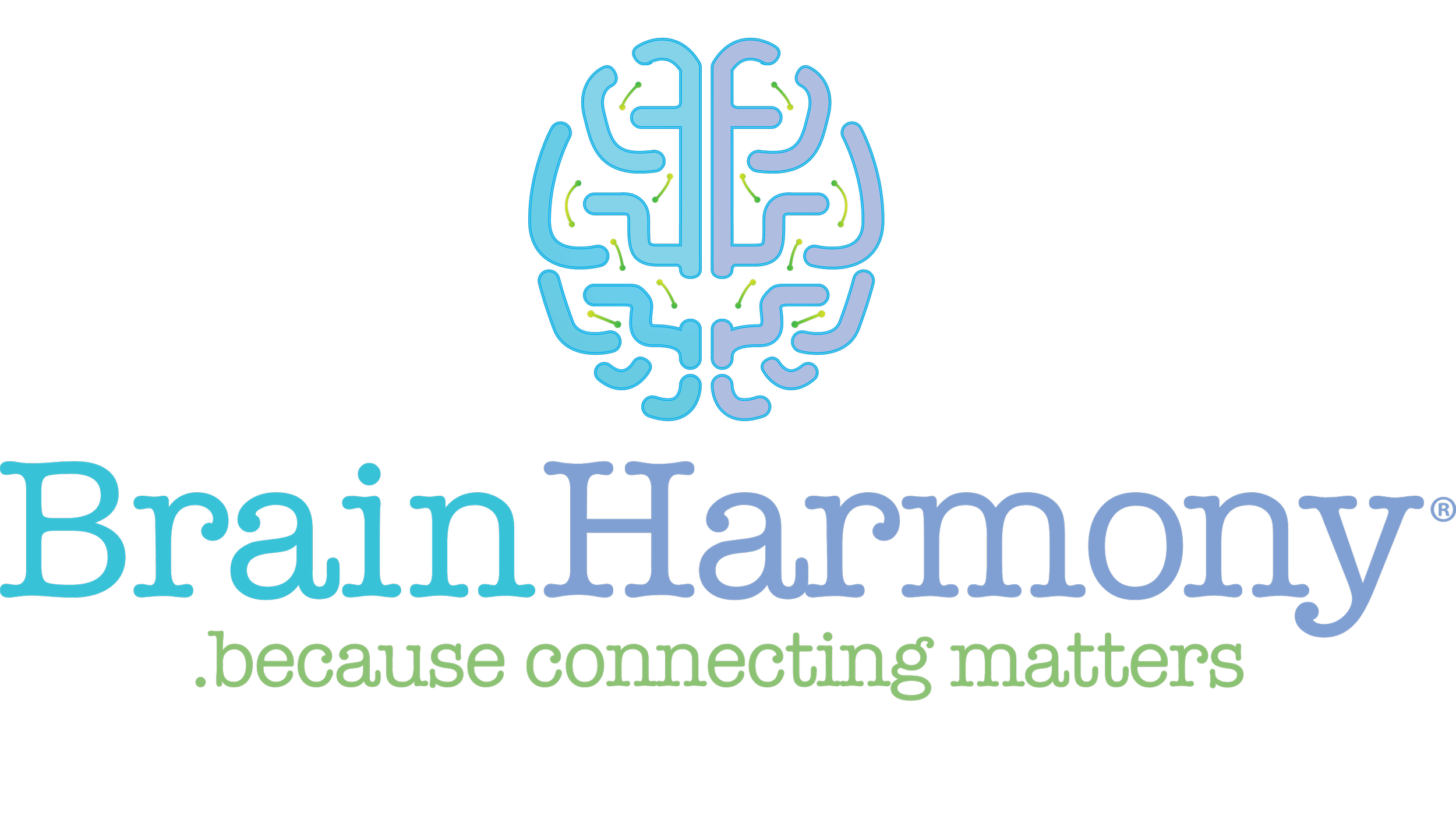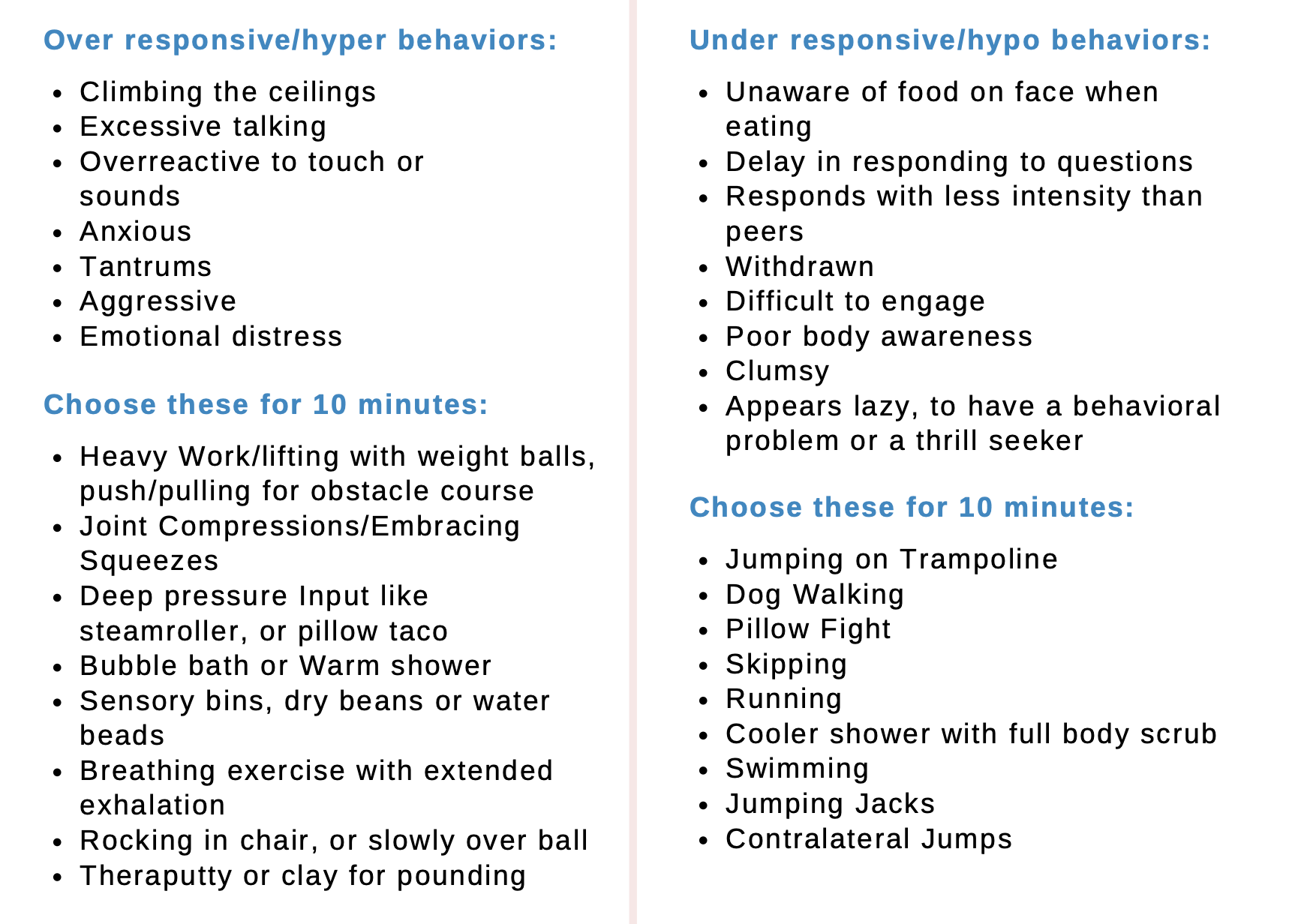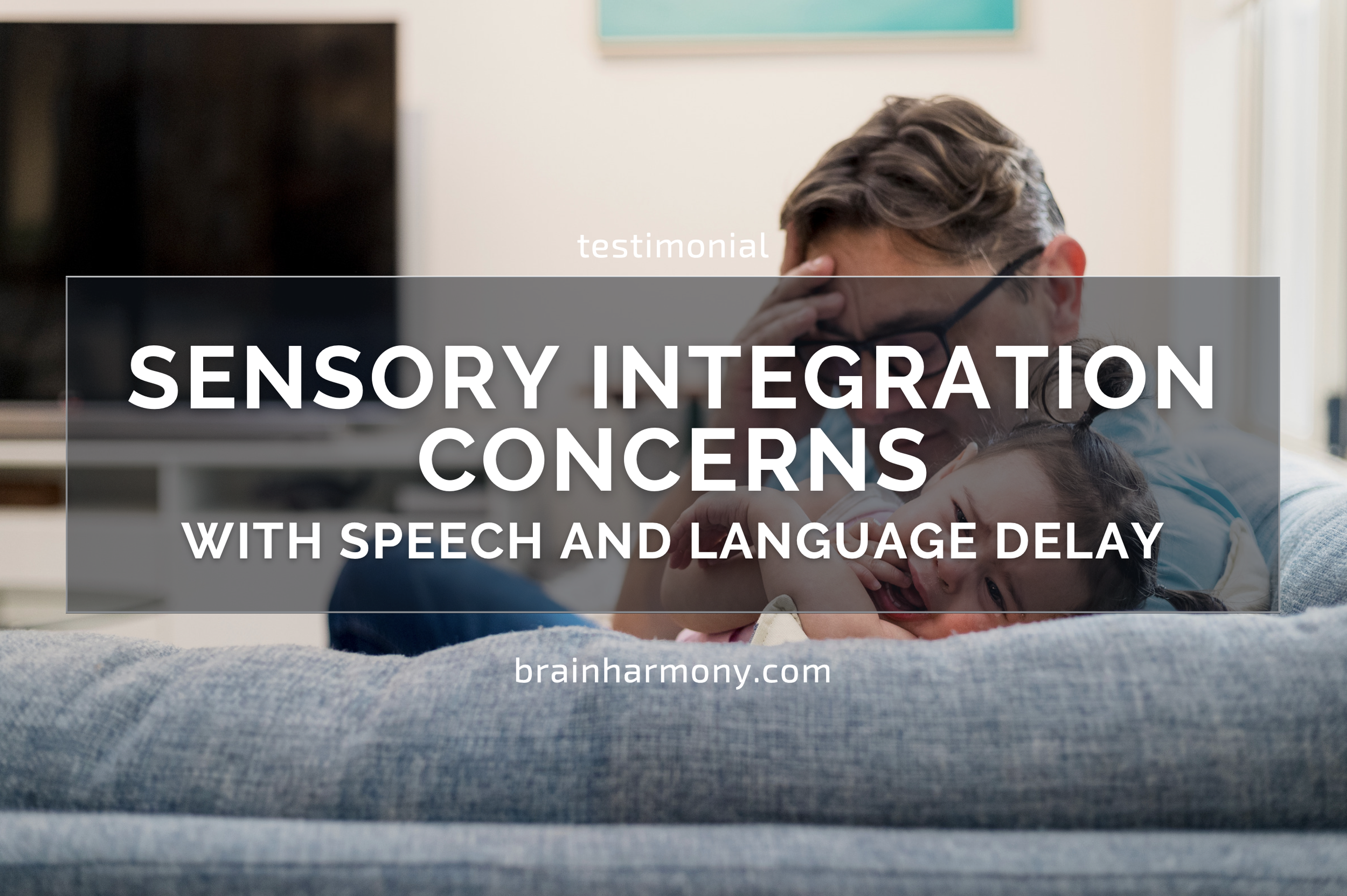Sensory Processing
When there is an issue with sensory integration, the world around you can feel unsafe, foreign, and unfamiliar. The ability to use your senses and coordinate with your environment is crucial for processes like speech development, learning, coordination, and so much more.
And yet, many people struggle with sensory integration. In fact, sensory integration dysfunction may be at the root of many learning and developmental challenges.
At-Home Tips For Sensory Processing
Read a little further below to find out what Sensory Integration is, and what the signs are. In the meantime, here’s a quick guide from our C.A.L.M. in the Home PDF if you would like to get started with some immediate techniques, to help calm the system through vagal regulation. and manage the environment for sensory regulation.
What Is Sensory Integration?
Sensory integration is the process by which your senses (touch, taste, sound, sight, smell) take in information from your environment and then send that information to your brain. Your brain then interprets this information, storing it and organizing it with the help of your memory of other sensory information that has come in throughout your life.
The information your brain gathers from sensory input is then used to help you respond to the environment around you.
The importance of sensory integration is often overlooked, as for many people, it just happens naturally. With that being said, having a functioning sensory processing system is vital for all your daily tasks. Everything you do, from brushing your teeth to eating your meals to socializing, driving, and working, all require fully functioning sensory integration.
When we are young, sensory integration develops as we roll around, start crawling, walking, and playing with people and toys. As we interact with the world around us, our senses gather information from the environment, and your database of information steadily grows.
In addition to the five senses previously mentioned, sensory processing also includes three additional senses that contribute to sensory integration[*]:
● Vestibular Your vestibular is responsible for maintaining your balance. It relates to the fluid content in your inner ear, which moves as you move your head. This gives you brain information as to where you're moving -- forward, backward, side to side, upside down, etc.
● Proprioception Proprioception is the awareness of the position and movement of the body. It tells your brain where your body is in space. Proprioception is used to help your brain plan your movements. For instance, when you tie your shoe without looking at your foot, that's proprioception at work. Another example would be your ability to throw or catch a ball without looking at your arm.
● Interoception Interoception tells your brain what's happening inside your body. Sensations like hunger, a beating heart, tense muscles, or dry mouth are all forms of interoception.
When There Is an Issue With Sensory Integration
Some children are born with sensory issues, while for adults, sensory integration dysfunction can result from certain diseases, injuries, or trauma.
One common issue that results from sensory processing dysfunction is either over-response or under-response to sensory information. You can also think of this as hypersensitivity or hyposensitivity.
For instance, someone who is experiencing hypersensitivity due to sensory integration issues may have a hard time with noise and get overwhelmed by loud noises. On the other hand, someone who is under-responsive may not hear someone calling their name or tapping them on the shoulder.
Another issue that can arise is difficulty making sense of the information that's being received from the environment. This can result in difficulty interpreting language, reading, or doing everyday tasks like pouring water into a glass or dressing themselves.
If the vestibular system is impacted, it can result in clumsiness, falling, and poor coordination. Below are some common symptoms or side effects of sensory processing dysfunction.
Sensory processing issues often occur in people with ADHD and autism, so you may find that some of these symptoms overlap[*].
Symptoms of Sensory Processing Issues
● Speech delays
● Hypersensitivity to touch, smell, taste, and sounds
● Easily overwhelmed by crowds and people
● Seeks out quiet spots when there is a lot of noise
● Easily startled
● Bothered by bright light
● Strong reaction to smell or taste
● Doesn’t like physical touch
● Doesn’t like trying new foods
● Squirms or fidgets a lot
● Not aware of others personal space
● Clumsy and uncoordinated
● May play rough if hyposensitive
● High pain tolerance (if hyposensitive)
How Brain Harmony Assists With Sensory Processing
Brain Harmony approaches sensory integration with a unique 5-step plan of care. In order to get the integration of sensory input from the environment back online, we start at the root of the issue and then work our way through the system so that sensory input can become fully integrated and organized.
The first phase involves vagal regulation. Using a system called the Safe and Sound Protocol, we calm the nervous system and create a sense of safety for the individual by working with the vagus nerve. It isn't until you feel safe and relaxed that the deeper work of sensory integration can begin.
In the second phase, we begin neurological reorganization. With neurological reorganization, we begin to rewire your brain, so it works for you and not against you. During this phase, you'll receive personalized recommendations from a trained therapist along with tools that you can use that are targeted to your needs. This phase assists in communication skills (verbal and nonverbal), emotional control, and cognitive function.
In the third phase, we work on your reflex integration. This step assists with physical coordination, hearing, vision, speech, and memory.
Phase four is when we introduce therapeutic activities. These hand-picked activities incorporate balance, strength, and range of motion to further organize your brain and improve your ability to process information from your environment.
In phase five, your trained therapist will work with you on skills and tools to help you manage daily tasks. This phase is all about quality of life and self-confidence. Here we will work on coping skills, frustration tolerance, and empowerment for moving forward
Sensory Integration Success Stories
Lucas’s Story
At Lucas's 18th-month doctor's appointment, his mother realized that he never started babbling. She realized that he had never made any talking sounds, and his only communication was through grunting. Furthermore, he never got a full night's sleep, and he was frightened by loud noises.
Her mom had heard about Brain Harmony through a Podcast and recommended it for Lucas.
After starting the Brain Harmony protocol, the first thing that she noticed was that Lucas started to make babbling sounds and was able to finally sleep through the night. He now says full sentences and can communicate with his parents. His mother explained excitedly that he has quickly become a much more vibrant boy, excited to try new things and engage in life.
Kim’s Story
After a traumatic car accident, Kim was diagnosed with Post Concussive Syndrome, which occurs when the symptoms of a concussion last beyond the expected recovery period. For Kim, the inflammation in her brain was impacting her vision, her hearing, her coordination, and her cognitive function just didn't feel right. She felt alone and like she was going crazy.
After working through the Brain Harmony Safe and Sound Protocol, Kim was able to once again enjoy the world as she knew it. She could go to church without being overwhelmed by the sound and light, she could engage at family events and be in crowds without having to run for the door, and she finally felt like herself again.
Brain Harmony For Sensory Processing
Sensory processing is a crucial component to learning and feeling safe in the world. As you take in information from your senses, it helps you feel grounded in the environment around you.
If you or a family member are struggling with sensory processing issues, the Brain Harmony 5-step program can get to the root of your sensory integration issues, and help you reorganize your brain with a bottom-up approach for lasting and effective results.




